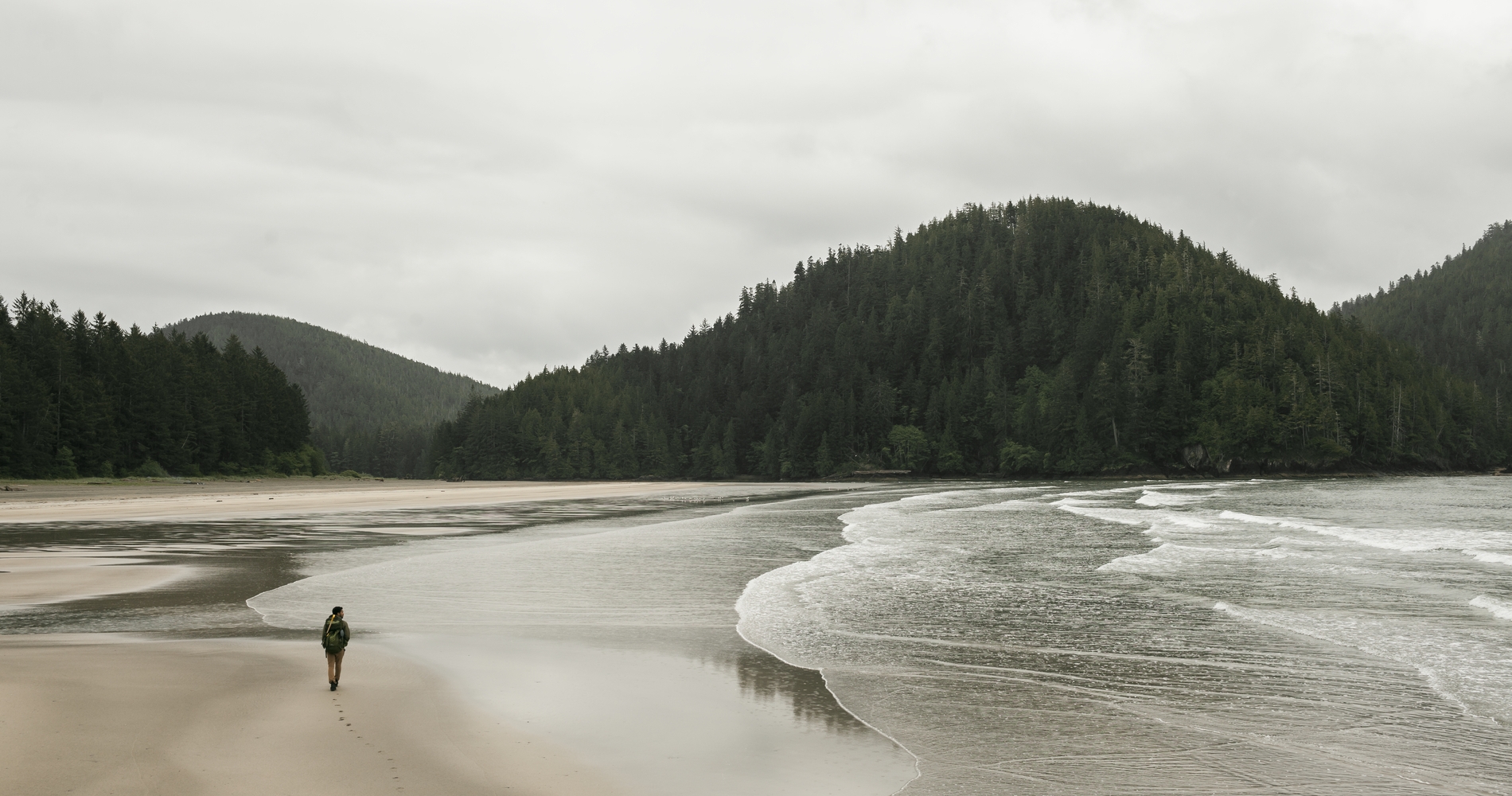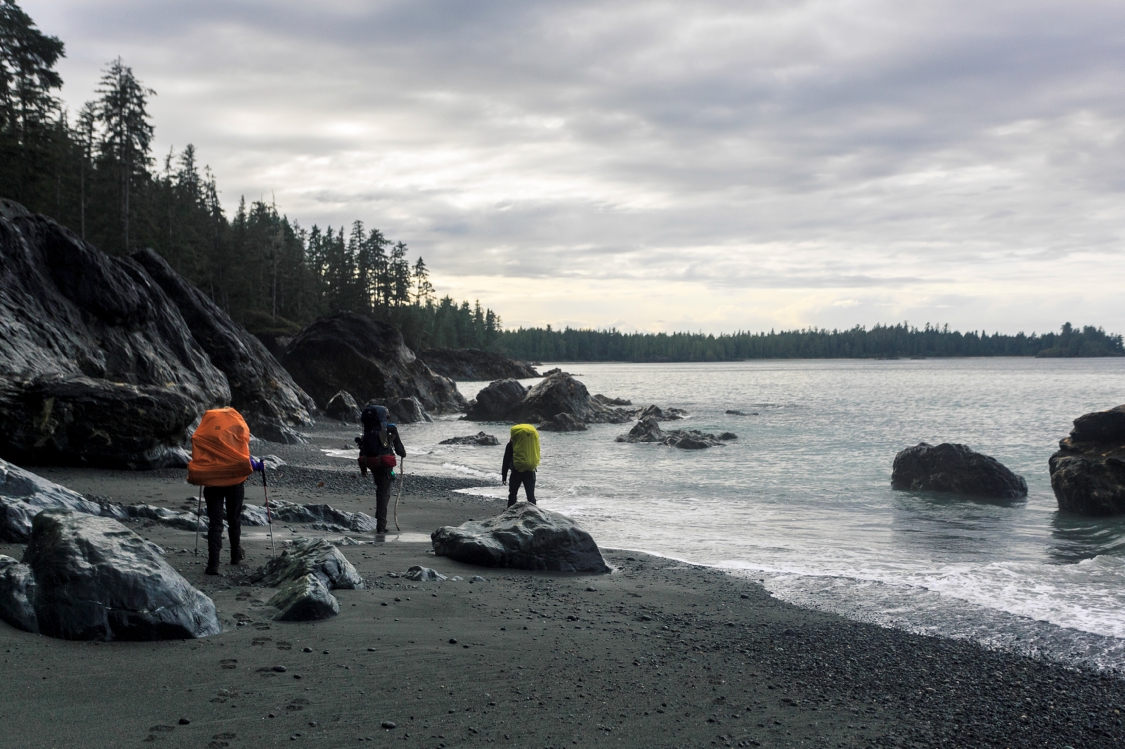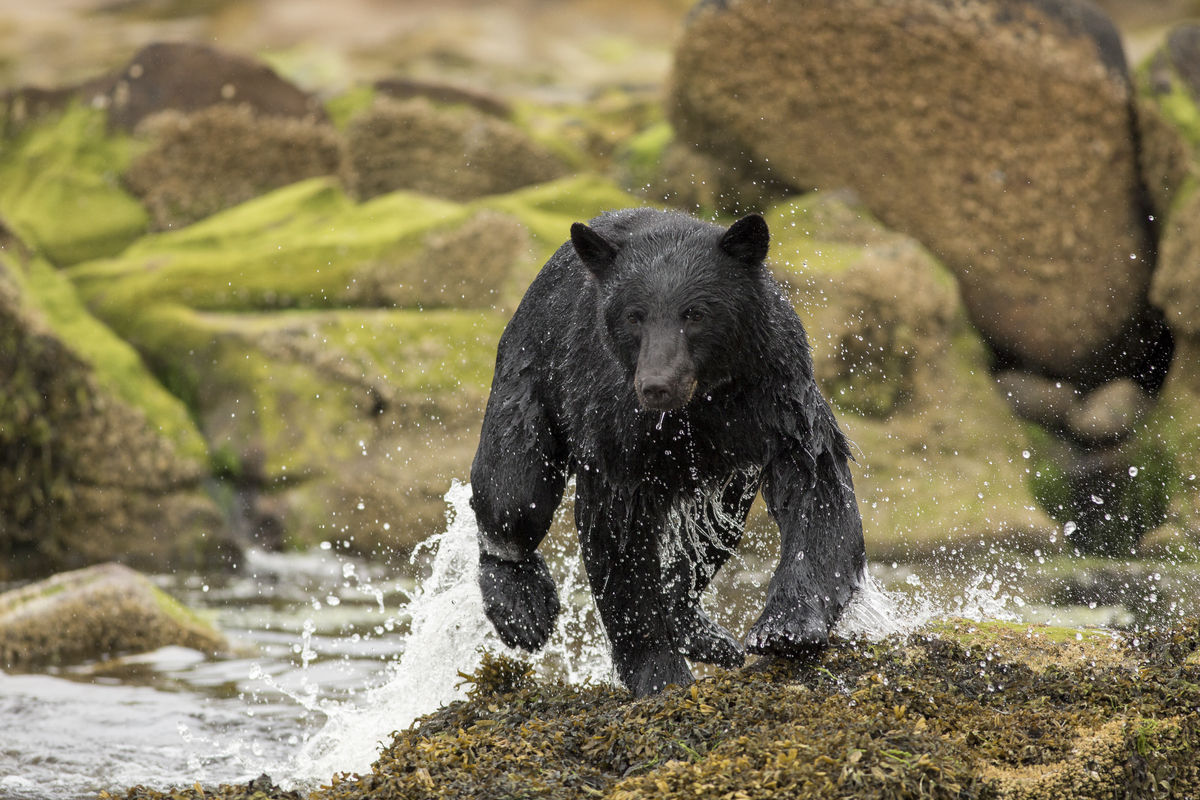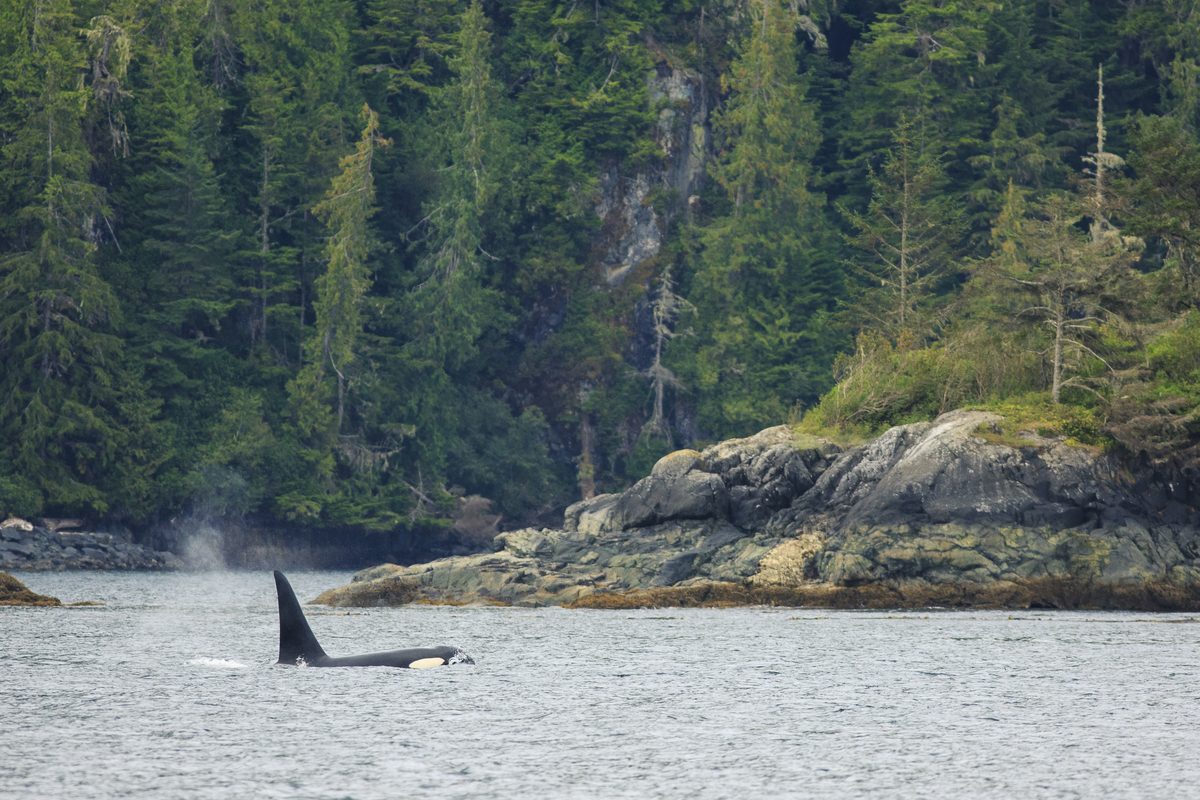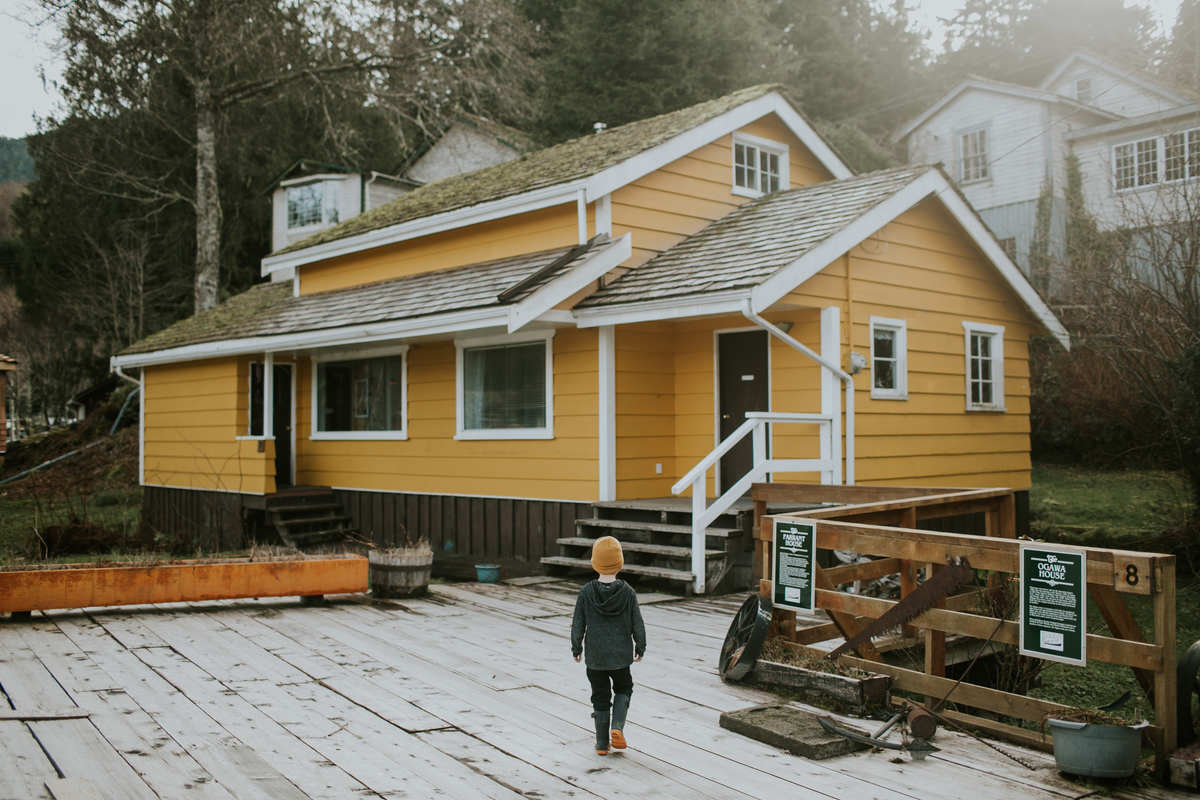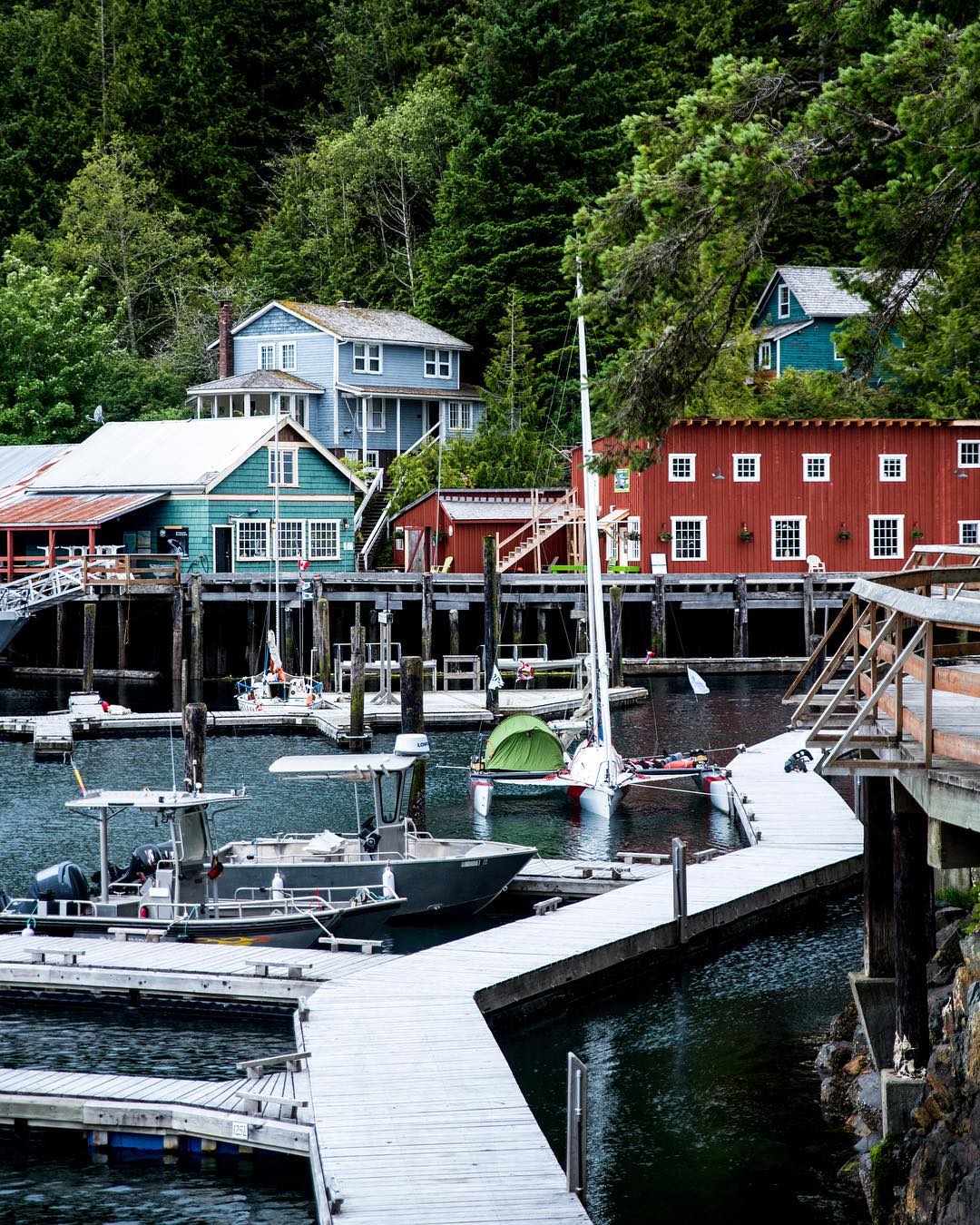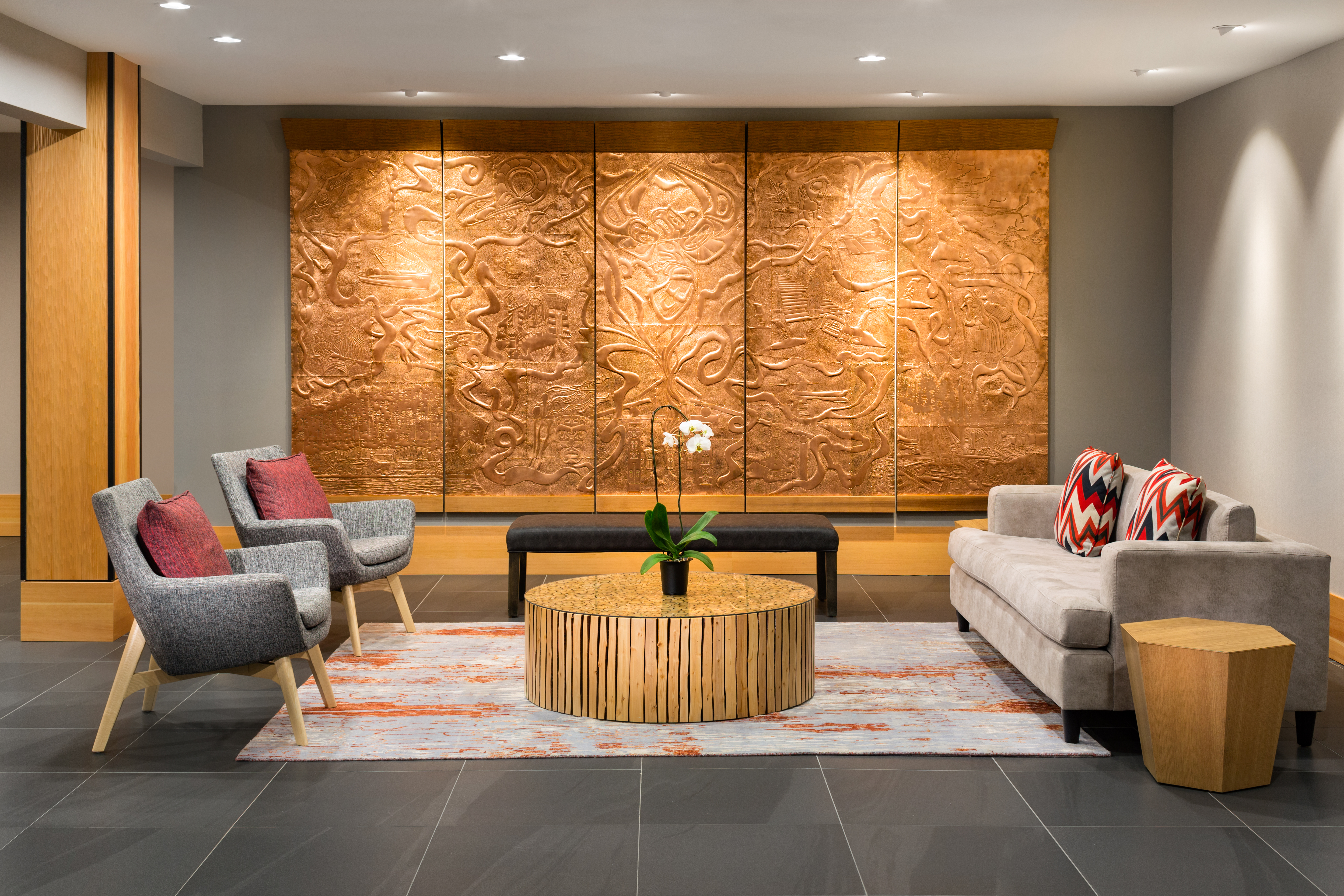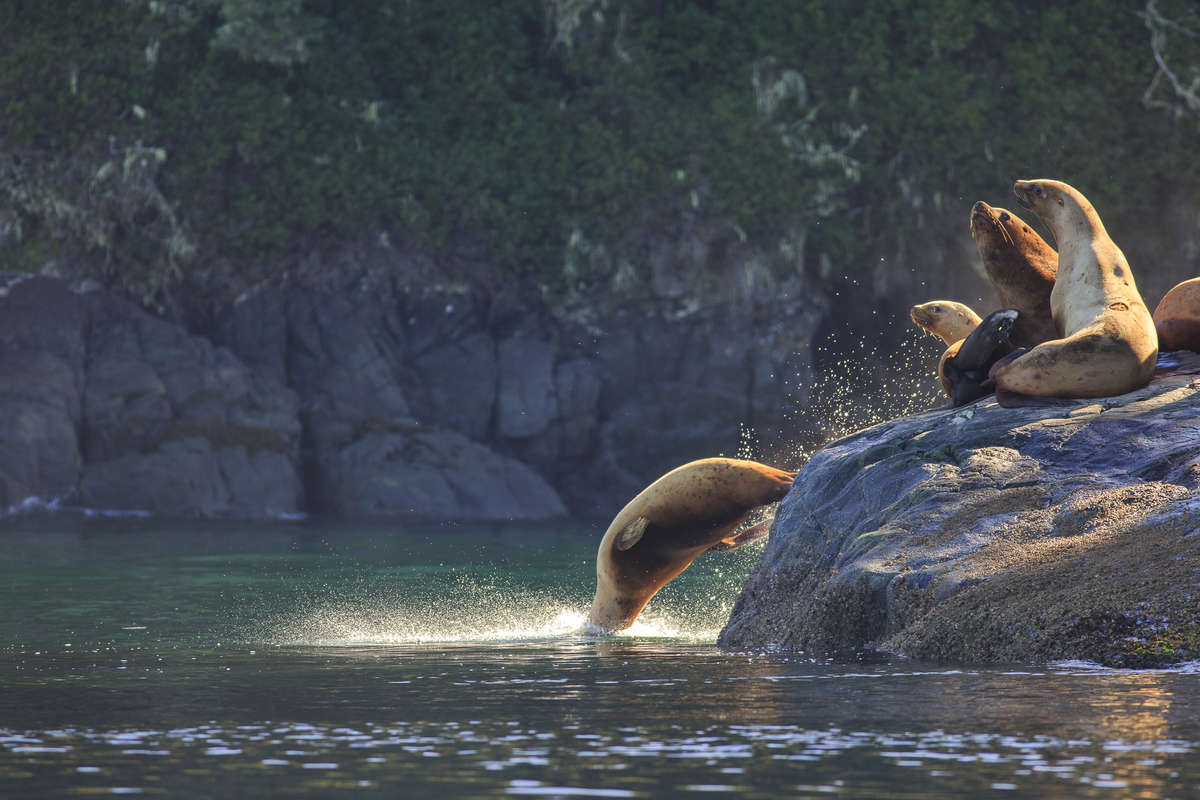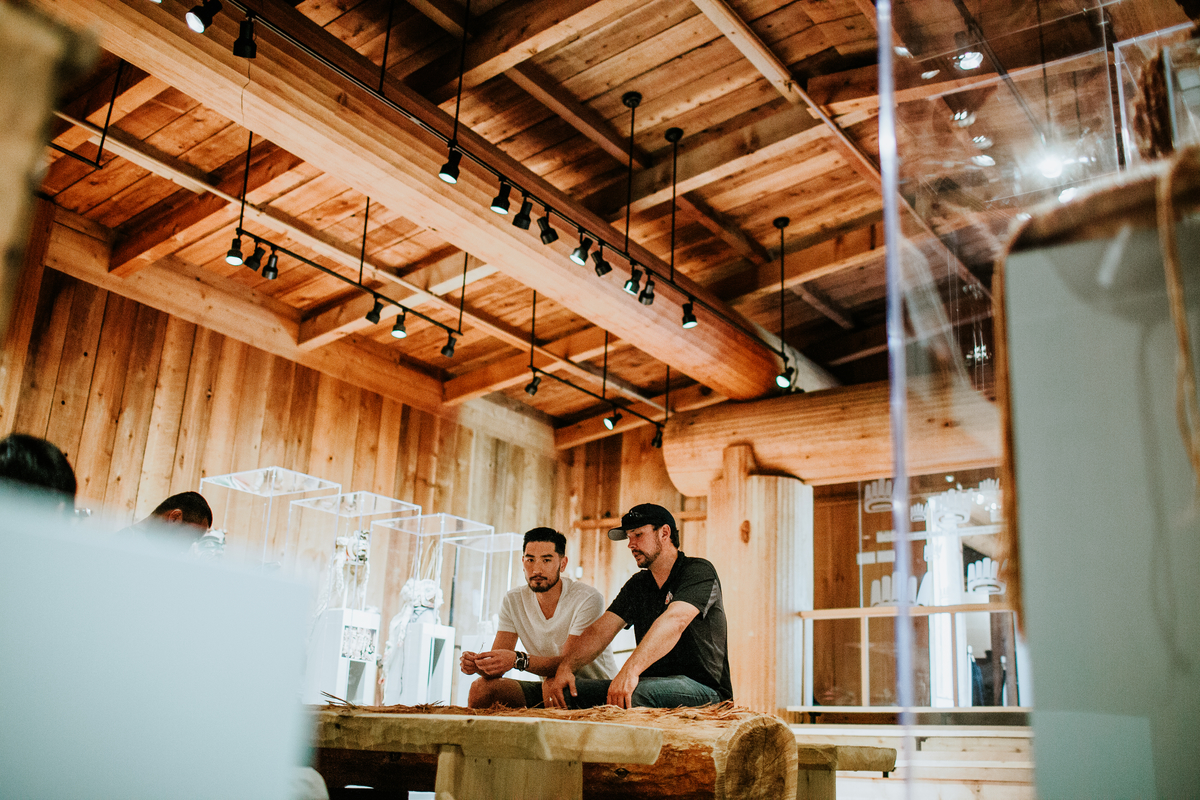WHAT TO DO
From fishing and whale watching to hiking the seaside routes and exploring vibrant Indigenous culture, most activities on the north Island revolve around the ocean.
In Campbell River, scuba diving and salmon fishing compete for top draw. Nearby Johnstone Strait is renowned for its strong currents, and the lush underwater environment in these oxygenated waters attract divers from around the world. Orca sightings are common here, and the area is a kayaker’s utopia.
The village of Telegraph Cove was built as a frontier lumber mill in the 1920s. Today, the wooden boardwalks and buildings lining the protected cove operate as a resort, with former workers’ cabins and offices transformed into accommodation and restaurants.


